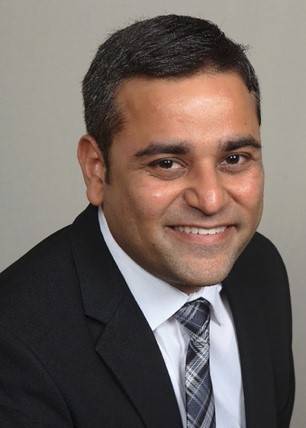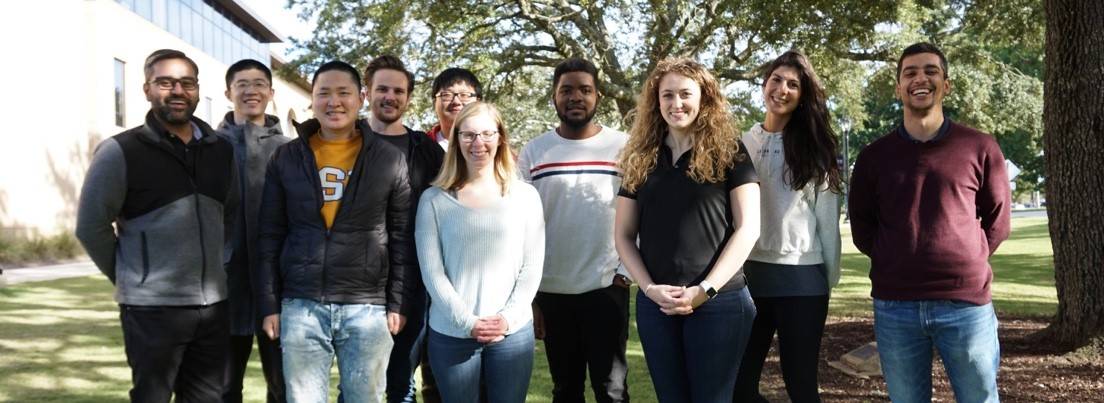Philanthropy in Action: Faculty Start-Up Funding Fuels Success
June 28, 2021
To provide LSU College of Engineering students with the best education possible, the college works to attract and retain highly qualified faculty for our laboratories and classrooms. Competing successfully for the best faculty talent, however, requires that the college be able to provide new faculty with crucial start-up funds, which enable them to launch their research and academic endeavors fully outfitted with cutting-edge lab spaces, equipment, and other requisite materials, as well as student research assistants. The ability to offer these resources is critical to attracting the highly qualified candidates whose efforts as faculty members help launch the careers of hundreds of LSU engineers and yield research that will benefit LSU, Louisiana, and the world. Support for new faculty is one of the development priorities of the college. Below are two faculty members who have benefitted from faculty start-up funding.
Dr. Ali Kazemian - Bert S. Turner Department of Construction Management

Q: What is the focus of your research and teaching?
A: My research and teaching activities at LSU are mainly focused on advanced construction technologies, which aim at improving the productivity in the construction industry through automation. For example, we are exploring different aspects of “construction 3D printing,” a revolutionary automated construction technology with applications in residential construction, disaster relief, transportation infrastructure development, and extraterrestrial construction (e.g., habitat construction on the Moon and Mars).
Q: How did the availability of start-up funding affect your decision to join the faculty at LSU?
A: LSU’s available research infrastructure and the ability to acquire and develop necessary testing platforms using the start-up funds was an important consideration before starting my career at LSU. Implementation and testing is often critical to evaluate the feasibility and performance of new sub-systems or materials. These experimentation activities also generate quantitative data for further analysis and achieving a deeper understanding of robotic construction processes.
Q: What are you most proud of after your first years as an LSU Engineering faculty member?
A: I am proud of being part of this dynamic community of students, faculty, and staff at LSU and having the opportunity to contribute through my research, teaching, and service activities. I am also very grateful for all the support that I have been receiving from the Bert S. Turner Department of Construction Management, especially our pursuit of establishing a new construction 3D-printing lab and hiring new PhD students to join my research group.
Q: What are some ways you have used your philanthropic start-up funds?
A: Among other items, my start-up funds included the J.W. "Billy" and Janice Maxey Guitreau Professorship and equipment funding from the LSU Construction Industry Advisory Council (CIAC). These funds allowed me to establish a new construction 3D-printing lab here at LSU. We have acquired a variety of research equipment, including a polymer 3D printer, multiple pieces of fabrication and testing equipment, and the needed microcontrollers and electronics. We were also able to design and develop a lab-scale concrete printing system, which will be used by the students for research activities and to learn more about the construction 3D-printing technology. These developments were not possible without the philanthropic start-up funds and the valuable support from the Bert S. Turner Department of Construction Management.
Bonus Q: What do you hope to discover or accomplish over the next few years?
A: I am hoping that I can build a multi-disciplinary robotic construction research group that can make a significant impact on a local, national, and global scale. Talented LSU students, collaboration with other research teams at LSU, and partnerships with private and public agencies and companies play an important role in achieving this goal.
Dr. Bhuvnesh Bharti - Cain Department of Chemical Engineering
Adele W. and Robert D. Anding Professorship

Q: What is the focus of your research and teaching?
A: My research group focuses on understanding the behavior of nano- and micrometer-sized objects called colloidal particles. Just to give a perspective, a micrometer is approximately 1/100 the diameter of human hair. By understanding the behavior of such small colloidal particles, we provide solutions to long-standing scientific and engineering challenges. One such example from our research group is the ecofriendly dispersants for oil spill cleanup, where we use particles made of lignin (from wood) for collecting oil from the surface of water. I do teach an elective course called “Colloids and Interfacial Engineering” to our undergraduate students, where they learn the scientific and industrial relevance of colloid science. Additionally, I teach an undergraduate core course entitled “Chemical Engineering Thermodynamics,” which provides an overview of principles governing the exchange of energy in chemical processes.
Q: What are you most proud of after your first years as an LSU Engineering faculty member?
A: I am most proud of my undergraduate and graduate students and their professional success. Nearly every semester, I receive one or two emails from our graduating seniors updating me about their professional plans and jobs they are about to begin. They also mention how our department has impacted and reshaped their lives. There is no better feeling than reading such an email and hearing about the professional success of our students.
Additionally, my graduate students have done amazing research work in the lab. It is because of their efforts that we have been awarded several federal grants (including an NSF-CAREER award) and managed to publish our work in top-tier journals.
Q: What are some ways you have used your philanthropic start-up funds?
A: The startup funds were primarily used for research expenditures, which included salaries and wages to graduate and undergraduate students and research supplies. My success was made possible by these start-up funds, which enabled me to perform initial studies and secure federal support for my research.
Bonus Q: What do you hope to discover or accomplish over the next few years?
A: In the next few years, we hope to apply our knowledge of colloid science to the fields of environmental science and biomedical engineering. We envision this leading to ecofriendly alternatives to harsh chemicals currently used in chemical processes and introducing a new class of colloidal particles that can be controlled and programmed to perform work at micro- and sub-micrometer length scales.
